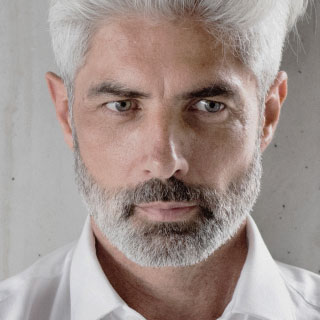Male to Female
Breast Augmentation
Ocean Clinic Marbella
The concept of breast augmentation, or reconstruction, in trans women goes far beyond the enhancement of breast size. It is an essential step in body feminisation surgery and therefore it is equally important to simultaneously address the key differences between the male and female chest.
These include a prolonged nipple-to-inframammary fold distance, a prominent décolleté, a short distance between both breast (about one finger wide) and possibly more central positioning of the nipple.
All this can be achieved by thorough selection of the type and size of silicone prothesis, right pocket positioning, and careful understanding of patients wishes. Further enhancement is possible by additional fat grafting. Breast augmentation is often performed simultaneously with gender reassignment surgery as a single surgical session.


Augmentation
Trans Women
Male to Female
Augmentation Mammoplasty At a glance
- Duration of surgery: 60 minutes
- Anaesthesia: general
- Discharge from clinic: same day
- Fit for society: 3 days
- Back to work: 4-6 days
- Aftercare and recovery: special bra for 4-6 weeks

Trans Women BA
What You Need to Know Beforehand
- Which implant brand is right for me
- What are the implants made of
- Which Implant Shape Is Right For Me
- Where will the scar be
- Where is the implant placed
After Surgery and Beyond
Patient testimony
"This hard-won credibility come from surgical skills, but also, and perhaps most importantly, from the ability to consider me as a responsible partner of my life and not just as a patient to treat."
- Lynn B., instagram.com/lynn.model
Which implant brand is right for me
Your preferences and anatomical proportions are key in finding the implant shape/ brand best suited to you. All the brands we use are of highest quality, certified, approved and in their latest generation. They all provide you with a life-long guarantee for the implant and, in some cases, even a reimbursement for re-operation in case of late-onset complications. In our opinion, the chief advantages of each brand are:
Motiva: Novel, available in ergonomic form, extremely low risk of capsular fibrosis in 6 years of survey, natural and pleasant feel.ergonomic form.
B-lite: Offering you a desired size and shape with approx. 30% less weight to carry.
Nagor: Very good value for money, highest possible projection (i.e. breast fullness distance from the chest wall) amongst all anatomic shape implants.
What are the implants made of
All our implants are made of silicon. We do not use anything else. The silicon molecules are three-dimensionally linked, which guarantees that the silicon cohesive gel cannot exit the silicon shell – and this even in the extremely unlikely case of an implant rupture. The silicon shell ranges from no texture (smooth) to various amounts of texture (feels like very fine sandpaper), depending upon brand and model. In case of B-lite implants, the standard silicon gel features additional microsphere enhancement, resulting in its lightness.
Which Implant Shape Is Right For Me
There are three different type of implant shapes:
Round: Offering more fullness to the upper part of the breast (upper pole).
Anatomic: Form of a teardrop, which does not change if you hold it upside down.
Ergonomic: Round when you are lying down and anatomic when you are standing up, just like a natural breast.
For every shape, there are four degrees of projection available – from low to extra high profile/height/width/fullness.
Please do not be misguided by the misbelief that anatomic implants under the large breast muscle produce the most feminine and natural results. The degree of hormonally induced breast tissue growth should be evaluated and synchronised with the size and shape of the implant. In order to obtain your desired final appearance, a competent examination and a surgeon’s advice is essential.
Where will the scar be
Depending on model and size of the implant, incisions are 3 to 4.5cm long and their placement varies according to your preference,and the surgical possibilities.
Inframammary fold: In the breast fold itself, only slightly visible scars.
Periareolar: Placed within the pigmented areola, barely visible.
Trans-axillary: Performed through the armpit, no visible scars, visible only if lying with elevated arms behind your head.
Where is the implant placed
There are three possibilities:
Subglandular: Over the big pectoral muscle, underneath the breast tissue.
Submuscular: Underneath the big pectoral muscle and its connective tissue.
Dual plane: The upper pole of the implant is covered by the major pectoral muscle, whereas the lower pole lies predominantly subglandular. The muscle is divided along its anatomical direction of fibres, avoiding any functional impairment.
The most important criteria in deciding the position of the implant is the thickness of the skin covering the upper pole and the amount of underlying fat tissue. The assessment is called the pinch test and is always carried out by our surgeon. In trans women, we prefer (if suitable) a sub-glandular positioning, allowing us the shortest distance between both breasts and more prominent décolleté.
Aftercare
Ocean Clinic is dedicated to avoiding any unnecessary discomfort. We routinely perform a temporary local anaesthesia of relevant sensory nerves, thus considerably lowering the pain in the early post-operative period. With an additional combination of one or two painkillers, you should be free of pain. At worst, you may feel a strain reminiscent of excessive gym training. Our suturing is resorbable; there is no need to remove stitches.
We will provide you with a special bra to be worn for about 4 to 6 weeks. Do not lift any objects beyond 5kg and avoid sports involving weights during this period.
Related Risks
Capsule is a natural sequel to any implanted foreign body (breast implant, pace maker, port etc). It is the formation of a surrounding connective tissue envelope, protecting the body from foreign objects. In about 10% of cases, this capsule might begin to contract, eventually becoming smaller than the breast implant itself, resulting in a change of form and/or size of the breast and provoking pressure and pain. If this is the case, it occurs on average 10 to 12 years after the augmentation mammoplasty. The treatment is exchange or removal of the implant.
There is no connection between breast implants and breast cancer. Breast implants further have no impact on the detection or the timely diagnosis of breast cancer. Extremely rare cases of anaplastic large cell lymphoma (ALCL) associated with breast implants have been described throughout literature. The therapy is removal of the implant including its surrounding capsule.
Overall, augmentation mammoplasty is the third most common procedure in the field of plastic surgery. In experienced hands, it is a safe and straightforward operation with highly rewarding results.
Do I Have To Change My Implants
If you do not have any problems and are still satisfied with the appearance, there is no reason why you should change your implants. The belief that there is a standardised necessary implant exchange every 10 years grew from a much higher incidence rate of capsular fibrosis in the past. With the latest-generation implants we use, these numbers diminish to very low levels. All our implants have a life-long guarantee. In case you have any symptoms or uncertainties, come and see us.
Alternatives
Fat grafting is a possible alternative technique if you have enough fat reserves. Multiple sessions are often necessary, as the body absorbs a certain amount of transplanted fat. Enhancement with silicon implants remains however the most effective procedure in trans women.
Our Experience
In the past 10 years, we have performed over 1000 breast augmentations. Each year, we perform over 60 breast augmentations exclusively in trans women. We are the authors of a milestone scientific publication about long-term outcome and our experience in breast augmentation in trans women. Authors of the first algorithm world-wide for breast augmentation in trans women. Over the last 2 years, we performed over 60 such procedures in the same surgical session as sex reassignment surgery. We believe in maximum enhancement of results by simultaneous fat transfer, in particular to upper and central part of the breast.





